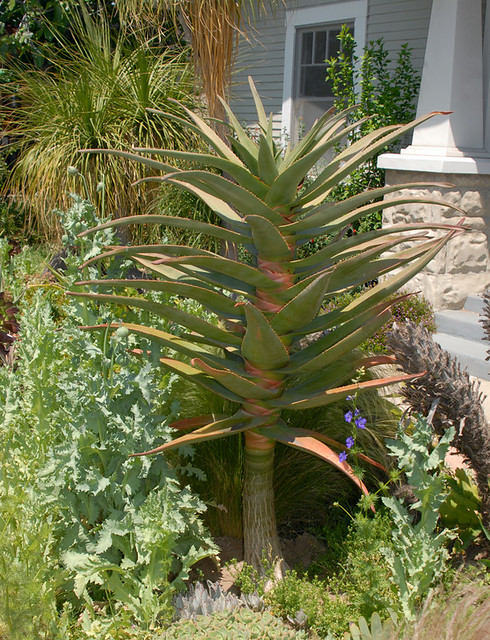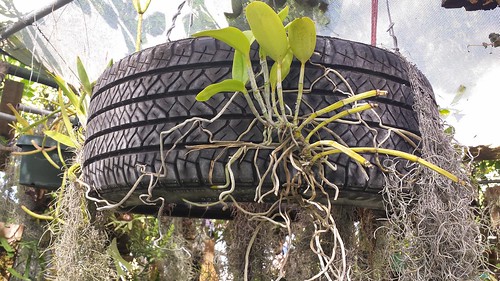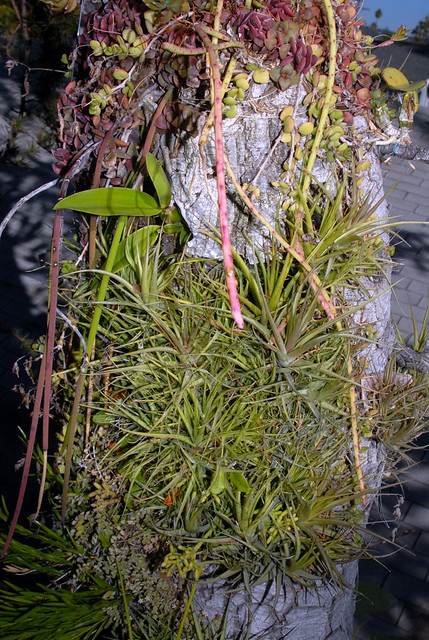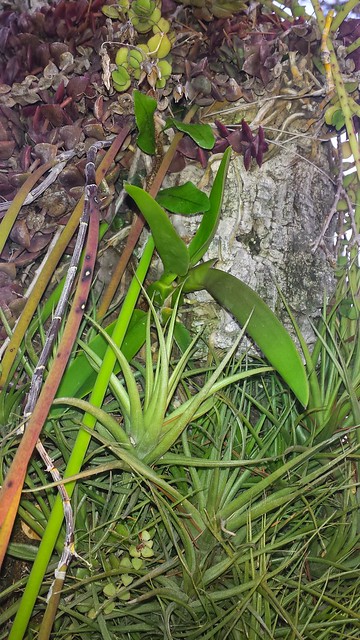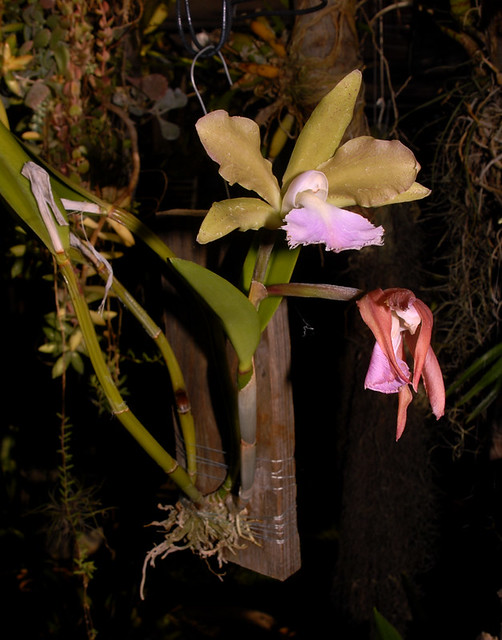My thread over at the ant plant forum...
Temperature Tolerant Epiphytic Ant Plants
*****************************************************
My first post! I'm going to attach a few epiphytes (topics) to this branch (thread).
I found out about this forum a few months ago on ebay. I probably did a search for "Myrmecodia" but I can't remember exactly which vendor it was that mentioned this forum in the item's description.
Epiphytic ant plants are awesome so it was pretty great to learn about this place. I immediately added it to my long list of plant forum bookmarks and every once in a while I lurked around. It's been on my "to do" list to register and I finally got around to it.
A little bit about me... I live in Glendale, Southern California and I LOVE epiphytes! I grow a wide variety of epiphytes outdoors year around. Last year I posted a short blog entry on some of my ant plants...
Epiphytic Ant Plants Outdoors in Southern California?
I think it would be really helpful if there was a comprehensive list of epiphytic ant plants (EAPs) that could be grown outdoors year around in places like Southern California. How many EAPs don't require a greenhouse in SoCal? Is it a long list? If this list was compiled and widely disseminated... then more people would grow EAPs. Wouldn't you like to walk around SoCal and see EAPs growing on lots of trees? I know I would!
Now, like I said, I think this forum is great...but there's not much activity. I'm definitely biased but maybe a better strategy would have been to start an epiphyte forum instead? Then you could have had a category dedicated to APs. I'm pretty sure that many of you grow other epiphytes besides APs...right? Any of you grow any epiphytic blueberries...aka "Ericas"?
I sure wouldn't be surprised if my friend Dave started a forum dedicated to Ericas. He really loves them. But how much activity would it have though? Maybe less activity than this forum? But Dave doesn't just grow Ericas...he also grows a bunch of other epiphytes...ferns, orchids, Gesneriads, Tillandsias, Bromeliads, APs, Anthuriums, Hoyas, Dischidias, Rhipsalis, Peperomias...it's a long list.
In theory, a forum with all these groups would be quite active. And it's a given that there would be plenty of spillover. Lateral movement is super easy. Plenty of epiphytic plants are quite happy growing in a moss basket. So it seems likely that the individual groups would grow much faster together than if they were apart. Not sure though how large a group would have to be to support its own forum. Clearly the orchid group is already large enough. It's large enough to support several forums. Haven't visited the
bromeliad forum very much lately so not sure how active it's been.
How would the categories be sorted in an epiphyte forum? Alphabetically? If so, then the ant plants would be at the top of the list!
The simplest approach to starting an epiphyte forum would be to just use this forum. The domain name wouldn't have to change...just the title and description. Rather than "the ant plant forum" it would be "the epiphyte forum". Then you would move all the EAP threads into one category. Lastly you would change the names of the current categories. Voila!
When people registered...they'd basically be registering for a dozen forums rather than just one...
Ant plants
Aroids
Ascleps
Bromeliads
Cactus
Ericas
Ferns
Gesneriads
Melastomas
Misc
Orchids
Peperomias
And when people told their friends about this forum...they wouldn't just be promoting one group...they'd be promoting twelve groups. It should generate twelve times the interest.
Perhaps
Selby would be twelve times more likely to help spread the word?
Basically you catch more fish with a larger net. Which is why you should all start blogs if you haven't already done so!
